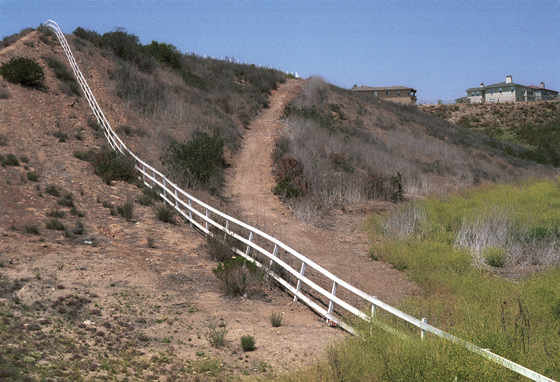
A rustic fence tumbles down a San Diego hillside, separating old from new. On one side, open space. On the other, the first signs of a subdivision. Trees toppled, earth moved, and cul-de-sacs carved out of the land. The scene is a familiar one up and down the state of California — and spreading from coast to coast. Soon, the hill will be covered with tidy tract homes, hundreds of them.
“The tract home is rapidly becoming the dominant American residential form, with deep cultural, social, and economic implications,” says Wendy Cheng, a second-year graduate student in geography at Berkeley. “These communities seem to rise up overnight on the overgrown fields we played on as children.”
Last summer, Cheng set off on a cross-country trip to find and photograph tract-home communities, as part of her academic investigation into what they represent to those who live there and those who don’t. She wanted to compare newer subdivisions (built in the last ten years) with long established ones (including Levittown, arguably the world’s most famous tract home community, which turned a Long Island potato field into 17,000 affordable homes for WWII servicemen and their families in 1947). Her study will produce an exhibit of 16×20-inch or larger color photographs, an accompanying booklet and Web site, and the foundation for her master’s thesis.
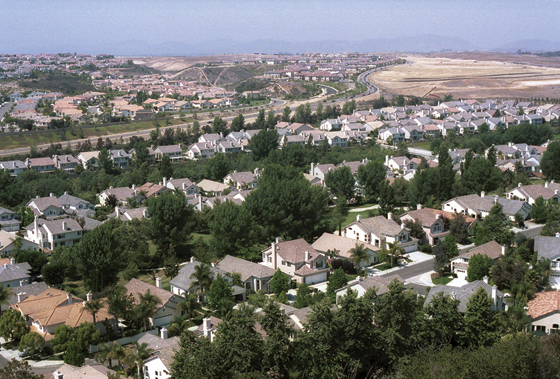
“Tract-home communities are largely ignored by architects, spurned by educated urbanites, and overlooked and taken for granted in general,” theorizes Cheng, whose 2002 odyssey began in the San Diego suburbs where she was raised. By car and plane, she went on to Phoenix, Scottsdale, and Tempe, Arizona; Denver, Colorado; Cleveland, Ohio; New Jersey and New York; Boston, Massachusetts; and Atlanta, Georgia.
During her travels, she found communities with something for almost every budget — modest townhouses for young couples, four-bedroom homes for growing families, and, higher up, executive enclaves with replicas of Tuscan villas, French chateaux, and, in the South, pillared plantation-style mansions.

“The new suburbs, by their omnipresence and sheer number, offer us a lens into the tastes of middle-and upper-class income lives in America — and by their near complete absence in them, the lives of lower-income Americans,” she discovered.
Her journey was supported by a Dorothea Lange Fellowship, which Cheng won during her first year of graduate school. Established in 1981 by Paul Taylor, a professor of economics, the fellowship is a memorial to his wife, who was his research partner and one of the 20th century’s most accomplished documentary photographers. Lange’s portraits of migrant farm workers captured the human effects of the Great Depression and brought about much-needed government assistance programs.
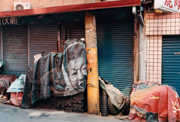
The $4,000 prize is awarded each year by the Office of Public Affairs for outstanding work in documentary photography and a creative plan for future work. Cheng was honored for her comparison, 1998 to 2001, of urban space in Taipei, Taiwan and Tokyo, Japan.
“Taiwan and Japan are two very interesting places to look at side by side because they share so many cultural things,” notes Cheng. “Yet the way in which they use space is totally different. In Tokyo, everything is planned and there is an aesthetic sense to every open space. By contrast, the landscape in Taipei is more haphazard and random, and not really set up to accommodate the movement of its citizens.”
To illustrate her point, in Tokyo she photographed a serene park located in the busy financial district, as well as eye-catching displays of brightly-colored cell phones, perfect strawberries, and beautifully arranged seafood. “Market displays are amazing in Japan,” says Cheng. “They make shopping a real pleasure.”

In Taipei, her camera found a three-legged dog wandering city streets, people showing their fatigue on a crowded subway train, and neighborhoods where older buildings, and history, are being razed for progress. “Taiwan has changed from a developing country to an industrialized wealthy country within the span of 30 years, if that,” explains Cheng. “I was curious to see what happens when a city develops so quickly.”
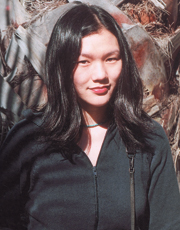
Photography’s power and its interactive quality appeal to Cheng. She grew up wanting to become a writer but says she “became frustrated with the writing process and the pressure of having to define things exactly.” Then, as an English major at Harvard, she took a course in landscape photography and was exposed to the “New Topographics” movement of the 1970s and photographers Robert Adams and Lewis Baltz, who “looked at everyday landscapes in a way that gave them equal value to what people usually think of as art subjects,” says Cheng. “They challenged people to consider all of their surroundings — pretty gardens as well as the parking lot next door — as part of the landscape. When I took this class, all of a sudden it seemed like everything I was interested in and the things that gave me real pleasure came together.”
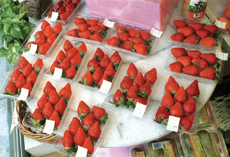
In her latest project, she is focused on America and the rapid trade of farmlands and wilderness for “McMansions” and cookie-cutter landscapes. However, having lived in suburbs, though not in a tract home, Cheng acknowledges that many people welcome subdivisions and the amenities — swim clubs, parks, and convenience malls — that are often included. She doesn’t have to travel very far from campus, in any direction, to witness that firsthand.
Forty miles from Berkeley, in Brentwood, a community primarily known for its annual corn festival and farms where you can pick your own fruit, several dozen families camped out recently for a chance to buy into a new subdivision of “affordable homes,” priced under $300,000. Weathering two nights of rain, they cooked out and slept in a parking lot, making friends with people who might one day be their neighbors, even planning block parties for the years ahead.
— by Lisa Harrington (originally published in The Graduate magazine, 2003)
Photographs by Wendy Cheng. Further information about the Dorthea Lange Fellowship can be found on the UC Berkeley Web (http://www.berkeley.edu/lange/ (opens in a new tab)).